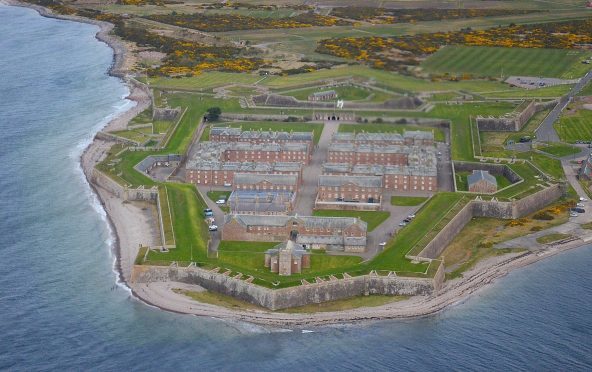More than a third of the most at-risk historic sites cared for by a leading public body are in the Highlands, according to a new report on climate change damage.
Fort George, with an “alarming” erosion rate of vegetation, is one of the 10 sites in the north out of a list of 28 in the red warning zone.
The survey commissioned by Historic Environment Scotland (HES) also shows there are a further 160 sites at “high risk.”
The Climate Change Risk Assessment aims to set out methodology to determine what action must be taken to preserve historic sites.
The findings are based largely on six categories: river, rain, groundwater and coastal flooding as well as coastal erosion and slope instability.
The 260-year old Fort George is vulnerable to coastal erosion and winter storms according to Dr. Ewan Hyslop, Head of Technical Research and Science at HES.
“It is obviously a particularly exposed site to the north and is exposed to winter storms from the west, north and east. The big issue is coastal erosion.”
There is evidence that vegetation surrounding the fort is “eroding at an alarming rate” losing over a meter of ground in a single winter.
Dr Hyslop said: “A new climate projection UKCP18 will give us greater certainty into the next century and the indicators are that sea levels will continue to rise.”
Fort George is not alone, with ten other sites across the Highlands that also fall into the ‘red’ warning zone of highest risk.
Among the others are some of the most ancient sites like the Neolithic Wideford Hill Chambered Cairn and the Napoleonic-era Hackness Battery & Martello Tower, all in Orkney.
A large proportion of the sites are in west such as Argyle & Bute, Orkney, Shetland and Highlands as a considerable factor in in vulnerable sites location is the “regionality” of much of Scotland’s weather.
Dr Hyslop noted that one interesting finding of the Assessment was the success HES enjoyed in mitigating the effects climate change.
“There were a high proportion of the 336 sites that are vulnerable but the mitigating factor of caring for the sites substantially reduced their risk level.”
Dr Hyslop added: “Many of the Orkney sites like Skara Brae have sea walls so really many of the actions are plugged into risk methodology and actually lower the risk.”
HES is one of Scotland’s primary heritage agencies and its efforts to stem damage through climate change form part of the Scottish Government’s response to climate change.
